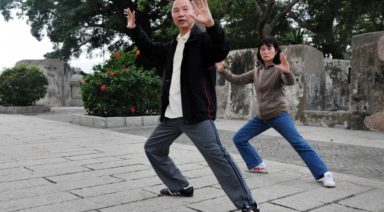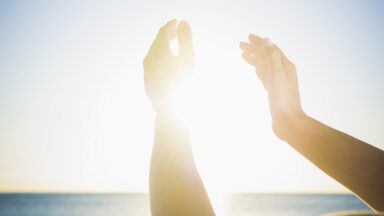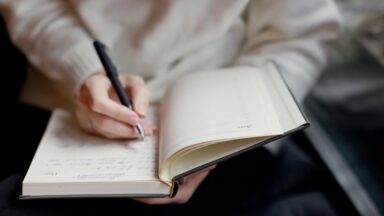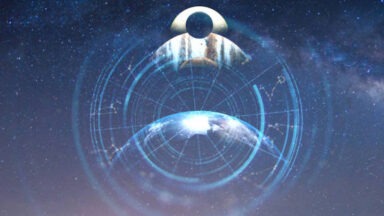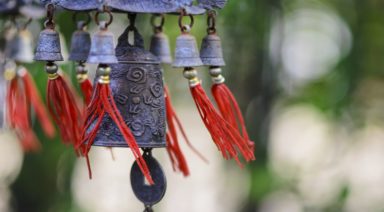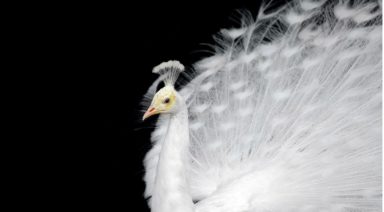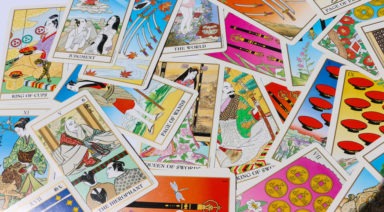Thich Nhat Hanh: Buddhist Master of Mindfulness, Miracles & Peace

Known as “Thay” in the western hemisphere, Thich Nhat Hanh is a poet, scholar, Zen Master, and lovely human being. He is also the father of “Engaged Buddhism,” a movement that brings together practical Buddhist wisdom, social activism, and mindfulness.
Thay is a global phenomenon and a gentle, inspirational friend to all. His tireless efforts as a teacher of Buddhadharma have alleviated the pain and suffering of millions of people across the globe. His beautiful lectures, meditations, and bestselling books have inspired countless followers to seek the light within, and find peace.
Thay was born as Nguyen Xuan Bao, in the city of Quang Ngai, Vietnam, in 1926. By age 16, he was a novice monk at Từ Hiếu Temple, in Hue City, which is where he was given his name, Thich Nhat Hanh.
Thay was the first monk to be seen regularly riding a bicycle in public and one of a handful of monks who saw serving humanity to be a form of meditation.
“There is no way to happiness. Happiness is the way.”
— Thich Nhat Hanh
Thay graduated from Báo Quốc Buddhist Academy and received extensive training in Mahayana Buddhism and (Vietnamese) Thiền “Zen” Buddhism. Soon after, he became a Bhikkhu, a fully ordained male, monastic, Buddhist monk.
To Thay, everything is a meditation: eating, walking, seeing, speaking, breathing, and relating. With each step and each breath, we can either inch away from the depth of ourselves or be fully present to our peacefulness. In every moment, we have an opportunity to decide the fate of the next.
Thich Nhat Hanh has been continually involved in the peace and nonviolence movements since his early days at Từ Hiếu. He believes veganism is vital to saving the planet and that nonviolence toward animals will inspire a more profound peace and improve the natures of our souls.
“Fear keeps us focused on the past or worried about the future. If we can acknowledge our fear, we can realize that right now we are okay. Right now, today, we are still alive, and our bodies are working marvelously. Our eyes can still see the beautiful sky. Our ears can still hear the voices of our loved ones.”
— Thich Nhat Hanh
Plum Village Monastery
Thay founded a lovely, Buddhist community known as “Sweet Potato” near Paris in the 1970s, shortly after he left Vietnam. In 1982, it was time to expand into Plum Village, which began as a small, rustic farm and developed into what is now the largest Buddhist monastery in Europe.
The official name of the monastery is Plum Village Community of Engaged Buddhism. It’s here that Thich Nhat Hanh established his monastic order, which consists of around 600 monks and nuns in 9 monasteries across the globe. The Thich Nhat Hanh Foundation is the charitable arm of Plum Village.
Thousands of Buddhists and other visitors journey to Plum Village every year, where each is nourished by the hundreds of resident monks and nuns who practice and teach Buddhism for the benefit of humankind.
The primary purpose of this lovely community is to live mindfully throughout every activity. This includes eating, walking, working, relating, laughing, or sharing a cup of tea with fellow visitors from other countries.
The monastery’s environment is peaceful and nourishing. In addition to serving the global, monastic Buddhist community, PlumVillage.org states that they hold many programs and retreats for laypeople, teenagers, veterans, the entertainment industry, members of Congress, law enforcement agencies, and people of color. All meals are vegetarian and delicious.
“When you touch one thing with deep awareness, you touch everything.”
— Thich Nhat Hanh
Thay’s Remarkable Accomplishments
Thay was very busy in his youth, which continued throughout his life.
In the early 1960s, he founded Lá Bối Press, Van Hanh Buddhist University, The Order of Interbeing (Tiep Hien Order), The Unified Buddhist Church, and the School of Youth for Social Service. The latter provided immeasurable value to Vietnam by sending young Buddhist workers to rural areas to build schools and clinics, and to help rebuild infrastructure in towns and villages.
Thay studied comparative religion at Princeton University, taught Buddhist psychology and other courses at his Van Hanh Buddhist University, taught comparative religion and Buddhism at Columbia University, led symposiums in Vietnamese Buddhism at Cornell University, and was a lecturer and researcher in Buddhism at the University of Sorbonne, in Paris. In short, Thay is a rock star.

In 1966, he became a Dharmacharya, or “one who becomes the dharma,” from Zen Master Chân Thật. He became the head of The Từ Hiếu Pagoda and a long list of monasteries. Later, he would chair the Vietnamese Buddhist Peace Delegation.
Thich Nhat Hanh has a long list of celebrity and religious followers, including Martin Luther King and Thomas Merton. After nominating Thay for a Nobel Peace Prize, King said, “I do not personally know of anyone more worthy of this prize.”
When Thay visited the United States to inspire efforts toward peace in Vietnam, both North and South Vietnam denied him entry. This exile lasted 39 years. The CIA labeled Thay a political dissident. By all accounts, Thay was an unrelenting and powerful force during these years. He led the Buddhist delegation to the Paris Peace Talks in 1969.
His monasteries and Dharma centers include:
- Blue Cliff Monastery in Pine Bush, NY
- Community of Mindful Living in Berkeley, CA
- Deer Park Monastery (Tu Viện Lộc Uyển) in Escondido, CA
- Magnolia Grove (Đạo Tràng Mộc Lan) in Batesville, MS
- European Institute of Applied Buddhism in Waldbröl, Germany
- Từ Hiếu Temple in Vietnam
- Prajna Temple in Vietnam
- Additional monasteries can be found in Paris, Hong Kong, and Australia
More recently, Thich Nhat Hanh founded “Wake Up”, a global movement of young people training in mindfulness, and related education centers in Europe, America, and Asia, known as “Wake Up Schools,” where teachers are trained to teach mindfulness.
Thay has been invited to teach at some of the most prestigious companies and organizations in the world, including Google, The World Bank, and The Harvard School of Medicine.
His mindfulness calligraphy has been exhibited in Hong Kong, Taiwan, Canada, Germany, France, and New York. Thay’s artfully crafted phrases are spiritually inspiring and nurturing.
In addition to his native tongue of Vietnamese, Thay is fluent in English, Chinese, French, Sanskrit, Pali, and Japanese.
Thich Nhat Hanh Quotes
Thay’s sweet and touching sentiments penetrate every heart who hears them.
Enjoy these simple, yet profound thoughts from Zen Master Thich Nhat Hanh:
- “Because of your smile, you make life more beautiful.”
- “The real power of the Buddha was that he had so much love. He saw people trapped in their notions of small separate self, feeling guilty or proud of that self, and he offered revolutionary teachings that resounded like a lion’s roar, like a great rising tide, helping people to wake up and break free from the prison of ignorance.”
- “Many people think excitement is happiness…. But when you are excited, you are not peaceful. True happiness is based on peace.”
- “Sometimes your joy is the source of your smile, but sometimes your smile can be the source of your joy.”
- “It’s very important that we re-learn the art of resting and relaxing. Not only does it help prevent the onset of many illnesses that develop through chronic tension and worrying; it allows us to clear our minds, focus, and find creative solutions to problems.”
- “Breathing in, I calm body and mind. Breathing out, I smile. Dwelling in the present moment I know this is the only moment.”
- “Every breath we take, every step we make, can be filled with peace, joy, and serenity.”
Thich Nhat Hanh Books
Thay wrote over 100 books on mindfulness, peace, fear, death, communication, and Buddhism. Over 70% of his books are written in English.
Here is a sampling from his authored works:
- Vietnam: Lotus in a Sea of Fire
- Being Peace
- The Sun My Heart
- The Miracle of Mindfulness
- Peace Is Every Step: The Path of Mindfulness in Everyday Life
- Zen Keys: A Guide to Zen Practice
- The Heart Of Understanding: Commentaries on the Prajnaparamita Heart Sutra
- Living Buddha, Living Christ
- True Love: A Practice for Awakening the Heart
- The Heart of the Buddha’s Teaching
- The Miracle of Mindfulness: A Manual on Meditation
- The Path of Emancipation: Talks from a 21-Day Mindfulness Retreat
- Be Free Where You Are
- No Death, No Fear
Living and Dying In Peace
In 2014, Thay suffered a severe stroke which left him paralyzed on his right side, and without the ability to speak. Fortunately, he can write, and often uses hand, head, and body gestures to answer questions.
In 2017, Thay was given an honorary doctorate from The Education University of Hong Kong for his “life-long contributions to the promotion of mindfulness, peace, and happiness across the world.”
In November 2018, Thay returned to the Vietnam temple where his initiation into monkhood took place, Từ Hiếu. Imagine those early days when the young Thay eagerly learned about meditation, mindfulness, and Buddhadharma from his Zen Master, Thanh Quý Chân Thật. Thay has chosen to spend his remaining days here.
Throughout the years, media outlets have called Thich Nhat Hanh, “The Father of Mindfulness,” “The Other Dalai Lama” and “The Zen Master Who Fills Stadiums.” Martin Luther King Jr. said Thay was, “an apostle of peace and nonviolence.”
“If you truly get in touch with a piece of carrot, you get in touch with the soil, the rain, the sunshine. You get in touch with Mother Earth and eating in such a way, you feel in touch with true life, your roots, and that is meditation. If we chew every morsel of our food in that way we become grateful and when you are grateful, you are happy.”
— Thich Nhat Hanh
The Five Chinese Zodiac Elements: How To Discover Yours And The Meaning Behind It

In Chinese culture, balance is a central concept. As energy flows in one direction, it naturally ebbs in another, creating a dynamic equilibrium. This idea is woven into practices like Feng Shui, traditional Chinese medicine, and holistic healing, where harmony in relationships—both internal and external—is essential. The Five Elements Theory, or Wu Xing, emerged during the pre-Qin period (770 BC – 221 BC) and forms the philosophical foundation for many aspects of Chinese thought and practice. The five elements—Wood, Fire, Earth, Metal, and Water—are considered the fundamental building blocks of the universe, constantly interacting in cycles of generation and control.
Similar to how Western astrology uses horoscopes, each element in Wu Xing has its own traits, associations, and symbolic meanings. No element is inherently superior; instead, each possesses distinct strengths and weaknesses and plays a vital role in maintaining universal balance. According to Five Elements Theory, all things originate from and eventually return to the universe through these elemental forces, which is why understanding our personal connection to them is so valuable.
Applications of the Five Elements Theory include:
- Traditional Chinese Medicine
- Feng Shui
- Fortune-Telling and Astrology
- Martial Arts
- Cosmology and Natural Philosophy
Understanding the Chinese Elements Cycle
Each of the five elements—Wood, Fire, Earth, Metal, and Water—stands independently, yet each influences and shapes the others. The world’s dynamic balance is guided by how the elements generate and control one another. The Generating cycle promotes growth and transformation, while the Controlling cycle maintains balance by regulating excess. Together, they create harmony when in proper alignment.
For example:
Generating Cycle (Shēng Cycle):
- Water feeds Wood.
- Wood fuels Fire.
- Fire makes Earth (i.e. ash).
- Earth produces Metal.
- Metal carries Water.
Controlling Cycle (Kè Cycle):
- Wood separates the Earth (i.e. roots).
- Earth absorbs Water.
- Water smothers Fire.
- Fire melts Metal.
- Metal penetrates Wood.




